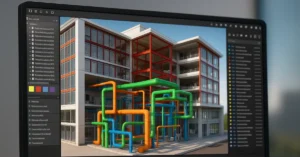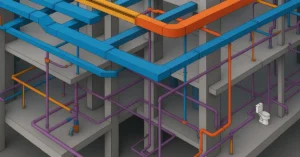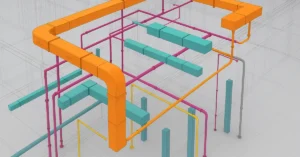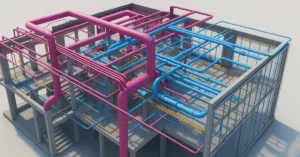Explore the dramatic and raw beauty of Brutalist Buildings in Belgrade
Belgrade, the capital of Serbia, is a city layered in history, rebellion, and reinvention. Among its architectural tapestry lies a controversial yet compelling chapter: Brutalist architecture. Often regarded as cold and imposing, brutalist buildings in Belgrade are raw, powerful, and unapologetically bold. Emerging in the post-World War II era, these concrete structures symbolized a new socialist vision—functional, massive, and emotionally resonant.
This blog uncovers the brutalist buildings in Belgrade that shaped its identity, tracing their origins, significance, and how they’re being perceived today. From residential complexes to government institutions, these architectural feats reflect not only design trends but deep political, social, and cultural shifts.
Understanding Brutalism in Belgrade’s Historical Context
The emergence of Brutalism in Belgrade aligns with the broader development of Yugoslav architecture after World War II. Under Josip Broz Tito’s leadership, Yugoslavia walked a unique path, breaking away from both Eastern Bloc socialism and Western capitalism. This ideological independence allowed architects in Belgrade to innovate with freedom and express national strength through architecture.
Brutalism was the perfect medium. With its use of raw concrete (béton brut), massive forms, and futuristic expressions, it reflected power, progress, and permanence. These buildings were often state-sponsored and designed by some of the country’s most renowned architects. They were meant to last—both structurally and ideologically.
Top Brutalist Buildings in Belgrade
1. Western City Gate (Genex Tower)
Location: Novi Beograd
Architect: Mihajlo Mitrović
Completed: 1977
The Genex Tower, also known as the Western City Gate, is one of the most iconic brutalist buildings in Belgrade. This twin-tower structure connected by a sky bridge stands as a surreal symbol of Yugoslav modernity. One tower served as a residential space, the other for commercial use, topped by a rotating restaurant.
Standing at 124 meters, it is still one of the tallest buildings in Serbia and an unmistakable landmark of Novi Beograd. Its spaceship-like appearance and use of concrete in bold geometry make it a classic example of late modernist brutalism.
2. Sava Centar
Location: Milentija Popovića Street
Architect: Stojan Maksimović
Completed: 1979
Built to host international conferences, the Sava Centar is a low-lying complex with a wide, angular layout. It reflects the balance between brutalist minimalism and modernist ambition. The center hosted major events such as the 11th Summit of the Non-Aligned Movement.
Despite its massive concrete frame, the building is praised for integrating landscaping and public spaces, creating a harmonious environment between structure and surroundings.
3. Museum of Contemporary Art
Location: Ušće Park, Novi Beograd
Architects: Ivan Antić and Ivanka Raspopović
Completed: 1965
This building is a softer interpretation of Brutalism, blending it with modernist elegance. Its geometric volumes are wrapped in white marble and concrete, creating a rhythm of forms that reflect both function and artistic intent. It was one of the first museums in Europe designed specifically to showcase contemporary art.
Its 2017 renovation preserved its brutalist essence while modernizing infrastructure. Today, it remains a cultural landmark and an architectural gem in Belgrade.
4. Radio Television of Serbia (RTS) Building
Location: Aberdareva Street
Completed: 1969
The RTS complex exemplifies brutalist principles in both form and function. Its massive, block-like layout and austere concrete surface convey a sense of authority and permanence. The building became tragically significant after being bombed during the NATO air strikes in 1999. Yet it still stands, a scarred but powerful reminder of resilience.
5. Beograđanka (Belgrade Palace)
Location: Kralja Milana Street
Architect: Branko Pešić
Completed: 1974
Rising 101 meters, this black-clad skyscraper defied traditional Brutalist norms by using glass panels over a strong concrete frame. It served as a commercial and media headquarters and was one of the tallest buildings in Yugoslavia at the time. While more of a modernist hybrid, its bold shape and monolithic appearance embody brutalist ideals.
6. Central Committee Building (Ušće Tower)
Location: Ušće District, Novi Beograd
Completed: 1964
Initially the headquarters of the Yugoslav Communist Party, the Ušće Tower is a towering brutalist relic of ideological governance. Although partially destroyed in 1999, it was rebuilt and modernized in 2005. Despite the makeover, its foundational brutalist skeleton remains, serving now as a commercial office building.
7. University of Belgrade Faculty of Philosophy
Location: Studentski trg
Year: 1960s
An academic fortress of concrete, the Faculty of Philosophy building embodies educational brutalism with its austere, repetitive facades and fortress-like volume. Functional above all, the space was designed to accommodate thousands of students efficiently while exuding a sense of intellectual gravity.
Cultural Significance and Social Symbolism
Brutalist buildings in Belgrade are more than just architecture; they are symbols. Constructed during a time of political experimentation and socialist pride, they were designed to reflect a utopian vision of Yugoslav society—egalitarian, strong, and forward-looking.
These structures spoke to the people in a common architectural language: raw material, monumental scale, and democratic access. The use of concrete was not just practical but ideological—suggesting permanence, equality, and national unity.
Public Perception and Re-Evaluation
Over the years, these buildings have gone through cycles of neglect, disapproval, and now, reappraisal. Many citizens saw them as relics of authoritarianism or as outdated eyesores. Yet a new wave of architects, photographers, and urban explorers have reignited interest in their unique aesthetic and historical value.
Brutalism’s unapologetic materiality is now being rebranded as authenticity. Young creatives in Belgrade are embracing these landmarks as part of their identity, celebrating them in art, design, and even fashion.
Preservation vs. Modernization
With the passage of time, preservation has become a challenge. Many brutalist buildings suffer from decay, poor maintenance, or ill-conceived renovations. Political transitions and capitalist market forces have also led to some demolitions and drastic redesigns.
Organizations such as Europa Nostra and local architectural associations advocate for the protection of Belgrade’s brutalist heritage. There’s a push for adaptive reuse—transforming old socialist structures into libraries, coworking hubs, galleries, and community centers without losing their brutalist soul.
Comparative Context: Belgrade and Global Brutalism
What makes Belgrade’s brutalism stand out compared to London, Boston, or Berlin is its deeply political narrative and regional uniqueness. Yugoslav architects blended Western modernist techniques with socialist realism, creating hybrid structures unlike anything in the West.
While Brutalism elsewhere was often about utility, in Belgrade, it was also about ideology, unity, and even rebellion. This gives the city’s brutalist landscape a haunting beauty—a reminder of dreams realized and broken.
Conclusion
Brutalist buildings in Belgrade are architectural witnesses to a complex past. Whether you view them as inspiring or intimidating, they undeniably form a critical part of the city’s cultural and visual identity.
As Serbia moves forward, the conversation around brutalist preservation grows louder. These concrete giants, born out of ambition and ideology, deserve recognition and thoughtful reinvention. They hold lessons in resilience, unity, and the transformative power of architecture.
So next time you explore Belgrade, don’t just pass by these concrete forms. Pause. Observe. Reflect. Because within these grey walls lie the stories of a nation, carved not in stone, but in bold, honest concrete.
If you’re interested in learning more about architecture firms in Europe, check out this comprehensive list of the top 50 firms compiled by Archgyan. From innovative startups to long-established industry leaders, this list has it all. Take a look and discover some of the most inspiring and influential architecture firms in Europe today.
If you’re interested in architecture and want to learn more about this amazing field, subscribe to our podcast on youtube
For more SketchUp tutorials, head to https://www.sketchupguru.com










